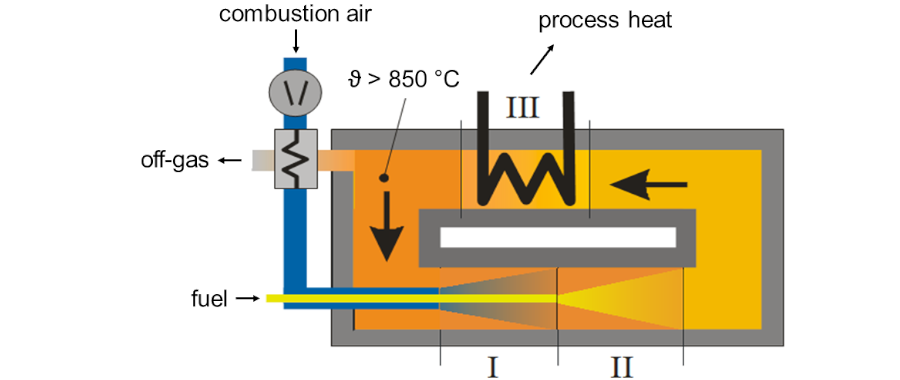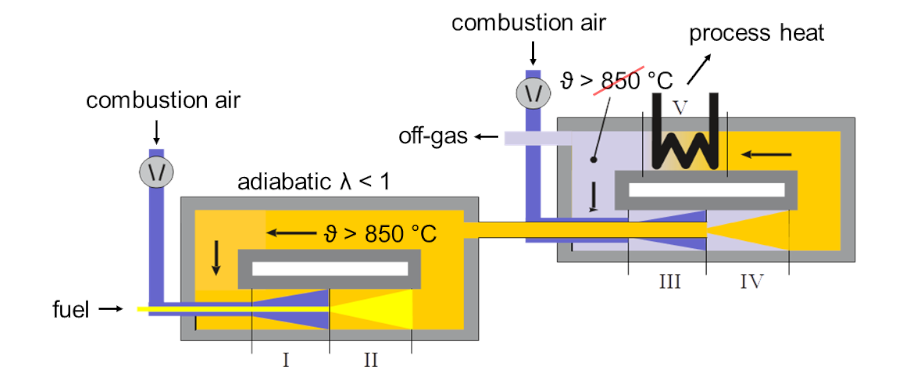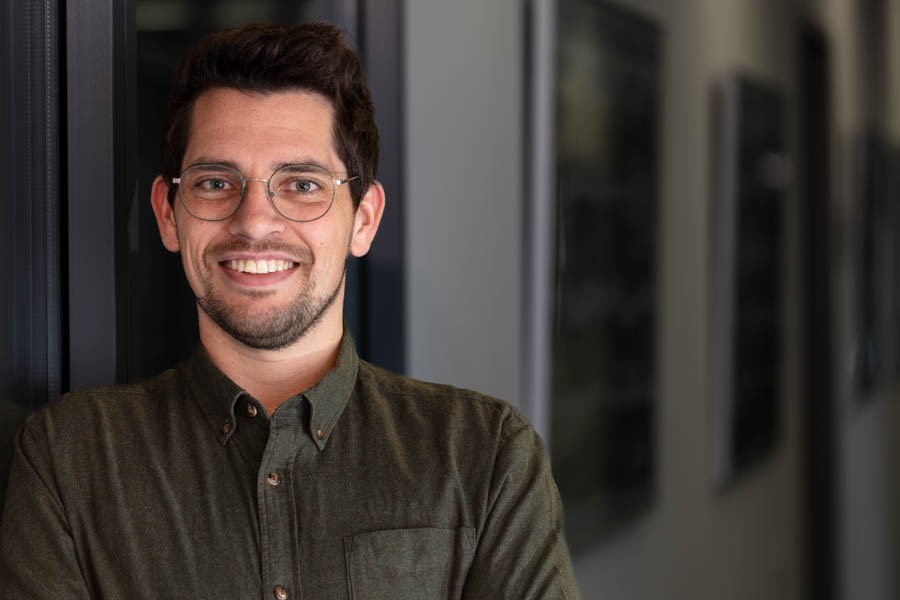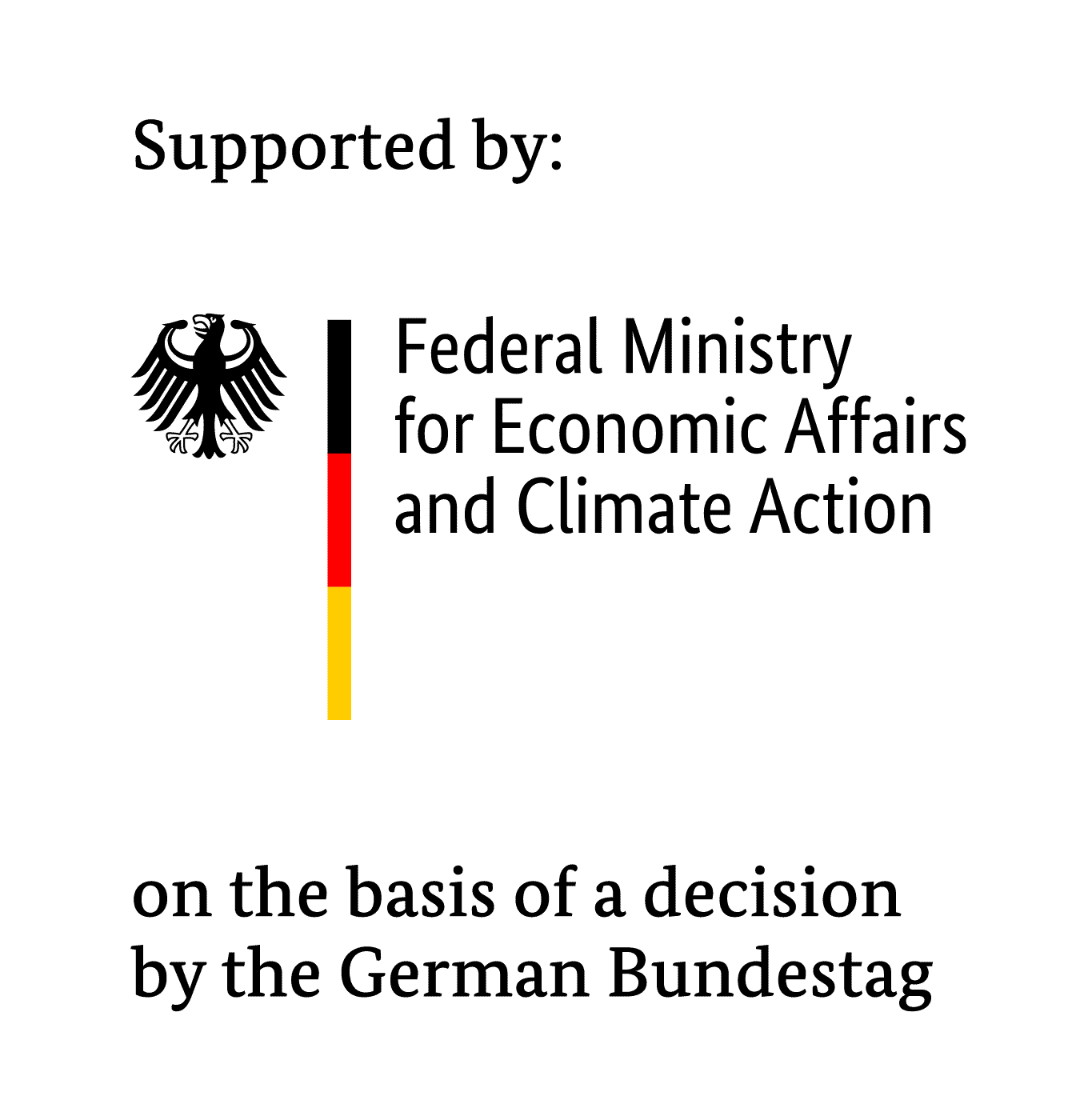FLOX‑2®: Multi-stage flameless oxidation as a contribution to the generation of CO2-neutral process heat
7th Energy Research Programme, BMWK, 1 May 2020 to 31 December 2023
Project description
The process of flameless oxidation can be described by an idealised representation, as shown in Figure 1. In step I, the combustion air mixes with the recirculated exhaust gas. The exhaust gas temperature is above the auto-ignition temperature of the air/fuel mixture, 850 °C is common in technical applications. In step II, the fuel is injected. Due to the high exhaust gas temperature, the mixture is ignited and heat is released by the combustion reaction. This heat is made available to the process in step III.

Figure 1: Idealised process of flameless oxidation [from „ Handbook of Burner Technology for Industrial Furnaces“ by J. G. Wünning, 2015]
Multi-stage flameless oxidation is considered an extension of flameless oxidation. Furthermore, this type of combustion is also available in processes with combustion chamber temperatures below the auto-ignition temperature. Thus, heating up in flame mode is no longer required and combustion can take place flameless even at low process temperatures.
Fuel flexibility (no flame stabilisation) and extremely low pollutant emissions (reduction of thermal and fuel NO) are achieved with the new combustion process almost independently of the process temperature.
Figure 2 shows an idealised representation of multi-stage flameless oxidation for the case of fuel-rich primary combustion. The primary combustion chamber is adiabatic and stages I and II of the flameless oxidation take place in a fuel-rich regime. The resulting exhaust gas contains the complete enthalpy of the reaction of the primary combustion and has a temperature above 850 °C. The downstream heating chamber is used to heat the exhaust gas. The secondary air (step III) and the hot combustion gases from the combustion chamber (step IV) are fed to the downstream heating chamber in such a way that flameless combustion also takes place there with the necessary recirculation of the combustion gases. Heat is released in the heating chamber (step V) after steps III and IV once complete combustion has been achieved.

Figure 2: Idealised process of multi-stage flameless oxidation with fuel-rich combustion in stage 1
An alternative is highly fuel-lean combustion in the 1st stage and a supply of fuel in the 2nd stage.
Project goals
- Development of a novel combustion process for various process gases, including N‑based gases, whose composition is not permanently constant.
- low-pollution combustion of any fuel mixtures for the generation of high-quality process heat
- almost complete suppression of thermal and fuel NO formation, so that the use of N‑based fuels is also possible without costly secondary measures for denitrification of the exhaust gases (DeNOx)
- The applicability of FLOX® technology is extended to processes with temperatures below the auto-ignition temperature of the respective fuels
Project participants
Contact


Funding

The project with the funding code 03EN2044 is part of the 7th Energy Research Programme and is funded by the Federal Ministry for Economic Affairs and Climate Action based on a resolution of the German Bundestag.
